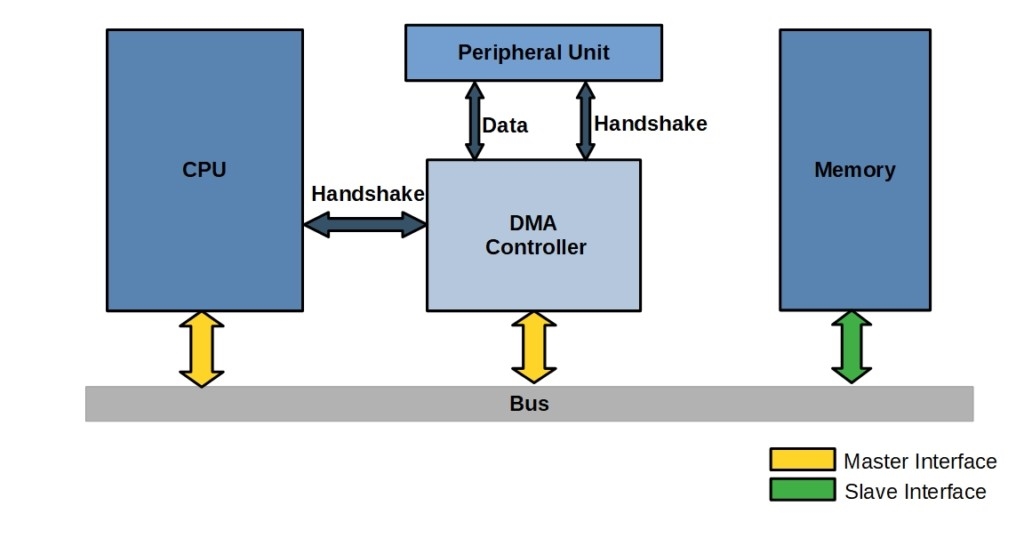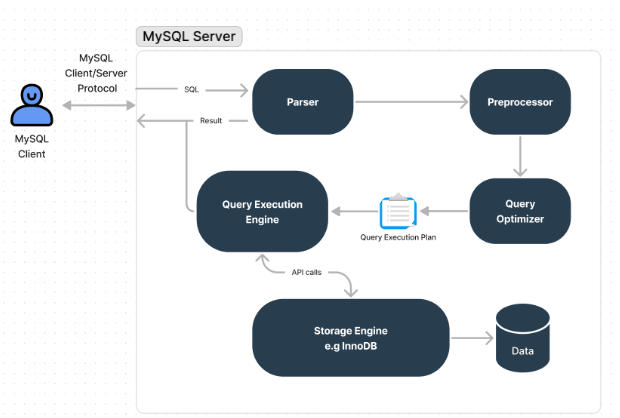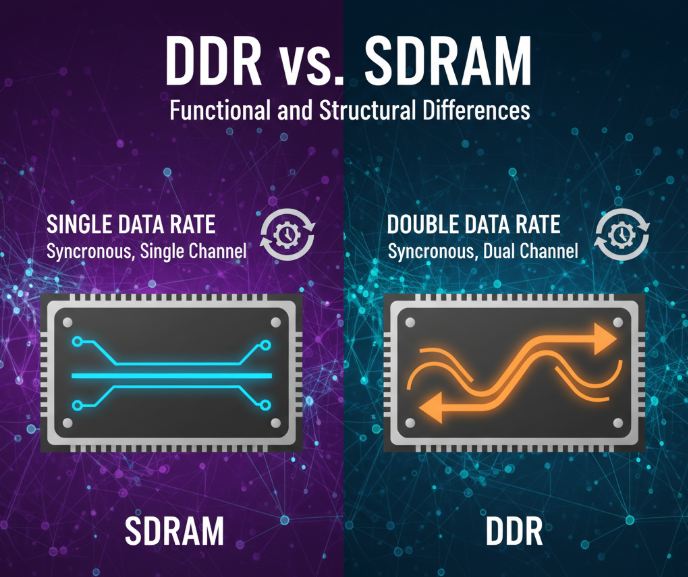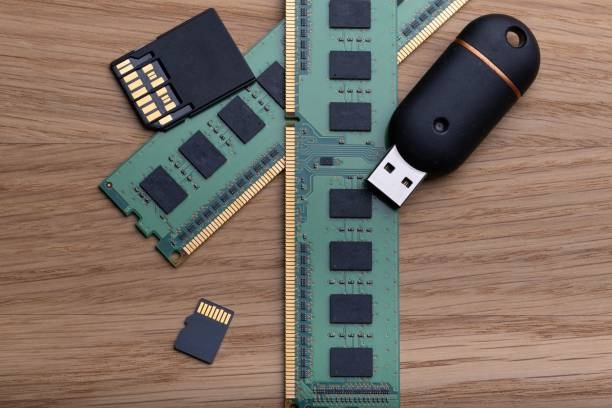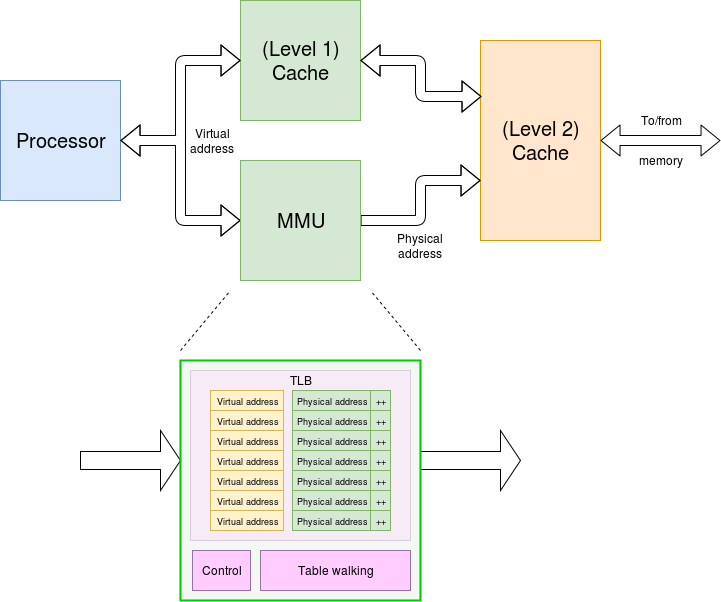Overview
Computer memory encompasses various technologies, either built-in or externally connected to a computer or server, for storing data. Some types are very fast and accessible directly by the central processing unit (CPU), while others are designed to store large volumes of data at lower cost.
All memory types fall into one of two categories: primary memory or secondary memory, depending on their role and use case. Understanding their applications and trade-offs is important for grasping how storage works and how to use it effectively.
Primary memory types
Primary memory refers to memory that the CPU can access directly for fast processing and faster startup. It is typically located physically close to the CPU to minimize communication latency. Examples include random access memory (RAM) and read-only memory (ROM).
Both RAM and ROM store data for direct CPU access. RAM is volatile, meaning its contents are lost when power is removed. ROM is non-volatile and retains data after power loss.

Random access memory
The name random access memory (RAM) comes from the CPU's ability to access any memory location directly rather than sequentially. RAM is extremely fast, only slightly slower than the CPU itself, and is used to hold data and instructions the CPU needs while running programs. This reduces the time the CPU would otherwise spend accessing secondary storage.
RAM is also one of the more expensive components in a computer, typically priced per gigabyte. Its cost is a main reason systems use both primary and secondary storage. There are two main RAM types.
Dynamic RAM (DRAM)
The most common RAM type uses one transistor and one capacitor per cell. All computers need DRAM to operate effectively. Older DRAM was called single data rate (SDR), while newer variants such as DDR2, DDR3, DDR4 and DDR5 offer higher performance and better power efficiency. Different DRAM types are not compatible, so a system supports only one DRAM generation at a time.
Static RAM (SRAM)
SRAM is faster than DRAM but significantly more expensive and larger, typically using six transistors per cell. It is therefore used in small quantities, almost always as caches between main RAM and the CPU to reduce the performance gap. The fastest SRAM implementations are integrated within CPU cores and operate at comparable speeds to eliminate latency.
Read-only memory
ROM is named because the data stored in it is not modified by ordinary means. Like RAM, ROM is fast and is usually located near the CPU, but unlike RAM it is non-volatile and retains data when power is removed. At power-up or boot, the CPU first reads instructions from ROM, which typically contain boot code required to start an operating system from secondary storage.
Three main ROM types are commonly found across electronic devices:
Programmable ROM (PROM)
PROM is manufactured in an unprogrammed state and can be programmed afterwards using a PROM programmer or burner.
Electrically erasable programmable ROM (EPROM)
EPROM stores information that can be erased and reprogrammed, typically by exposing the chip to ultraviolet light for erasure.
Electrically erasable programmable ROM (EEPROM)
EEPROM differs from PROM and EPROM in that it does not need to be removed from the system for erasing and reprogramming, though the update process may be slow and is usually performed only to update firmware or critical code such as boot software.
Secondary memory
Secondary memory is the persistent, non-volatile portion of a computer's storage that the CPU does not access directly. It is designed to store large quantities of data more economically for the long term. Examples include hard disk drives (HDDs), solid-state drives (SSDs), cloud storage and tape drives.
Secondary storage typically offers much larger capacity at lower cost than primary memory. Different secondary storage types allow users to store personal data, files, and software that the CPU can access indirectly via RAM.
Hard disk drive (HDD)
An HDD is an electromechanical device for long-term data storage and retrieval. It consists of spinning platters mounted on a spindle. HDDs are among the cheapest storage options per gigabyte, but they are less durable due to their mechanical components.
HDDs contain multiple moving parts that can fail and typically consume more power and generate more noise than other storage media. Their read/write speeds are much slower than RAM, but HDDs are well suited to long-term storage and archiving and remain common in older and budget systems.
Solid-state drive (SSD)
SSDs are semiconductor-based non-volatile storage devices that use NAND flash memory for persistent data storage. SSDs store data on integrated circuits and allow electronic read/write/transfer operations without moving parts, enabling quiet and efficient operation with lower risk of mechanical failure.
SSDs are faster and more compact than HDDs but are generally more expensive and offer smaller capacities. Their lifespan varies, and while they can often last several years, they may be less suitable for long-term archival storage than some HDD or tape solutions.
Optical drives (CD/DVD/Blu-ray)
Optical storage uses lasers to read from and write to media such as CDs, DVDs and Blu-ray discs. Most optical discs support read/write operations that allow data to be erased and re-recorded with a compatible drive.
Optical drives operate by scanning a rotating disc surface with a low-energy laser. Read/write speed depends on disc rotation speed; on the disc surface, pits and lands are detected by analyzing the reflected laser signal.
Tape drives
Tape drives use magnetic tape to store, read and write data and are enclosed to protect the flexible media. Like optical media, tape requires dedicated hardware to access the data. Tape systems use linear or helical-scan techniques to read magnetic marks on the tape.
Tape is cost-effective and suitable for long-term archival storage, with an average lifespan of up to several decades. However, tape systems are bulky and very slow for random access, since a drive must rewind or fast-forward the tape to reach a specific point.
Storage arrays
Storage arrays, or disk arrays, combine multiple HDDs, SSDs, or a mix of both into a single managed storage system for block-, file-, or object-based data. Arrays are common in server environments because they consolidate multiple drives into a large, centrally managed data store.
Arrays can store petabytes of data and provide centralized access for local and remote clients via application programming interfaces (APIs) or dedicated graphical interfaces. They are suitable for organizations that require centralized management of large data sets with multi-user remote access.
Network-attached storage (NAS)
NAS is file-based storage attached to a broader computer network and accessible to multiple users and devices. While often used by larger organizations, NAS can be scaled for small professional teams. It is useful when multiple systems need simultaneous access to the same data and supports collaborative workflows by providing a single authoritative copy of files.
Cloud storage
Cloud storage keeps data on remote servers that can be accessed over the internet from any device. It is widely used by individuals and enterprises to store data that needs to be regularly accessed without carrying local or external storage devices.
Primary vs secondary memory
If the CPU communicates directly with a storage type, it is considered primary memory and is essential for system operation. Secondary memory refers to storage devices not directly accessed by the CPU but accessed through primary memory. Key differences include:
- Volatility — RAM is volatile and loses data when power is removed, whereas secondary storage retains data without power.
- Speed — Primary memory must be fast enough to keep up with CPU cores; secondary storage is relatively slow and unsuitable for direct CPU access.
- Cost — Primary memory is designed for speed and is therefore more expensive per gigabyte and typically smaller in capacity, while secondary devices can reach terabytes at reasonable prices.
Volatile vs non-volatile memory
Volatile memory requires power to maintain stored information. When power is removed, data in volatile memory is lost. It is typically faster than non-volatile memory and is used to store data that needs quick access, such as the operating system, running applications and their working data.
Non-volatile memory retains stored information even when power is removed. Common examples include hard disk drives and SSDs, which store files, operating systems and applications that do not require immediate access. Non-volatile memory is generally slower because it is not optimized for rapid access.
Conclusion
Modern computing relies on multiple memory types for short- and long-term storage. Some are optimized for fast access, while others provide economical long-term storage of large volumes of data. Knowing the differences and typical use cases helps maximize data storage and management.
 ALLPCB
ALLPCB



